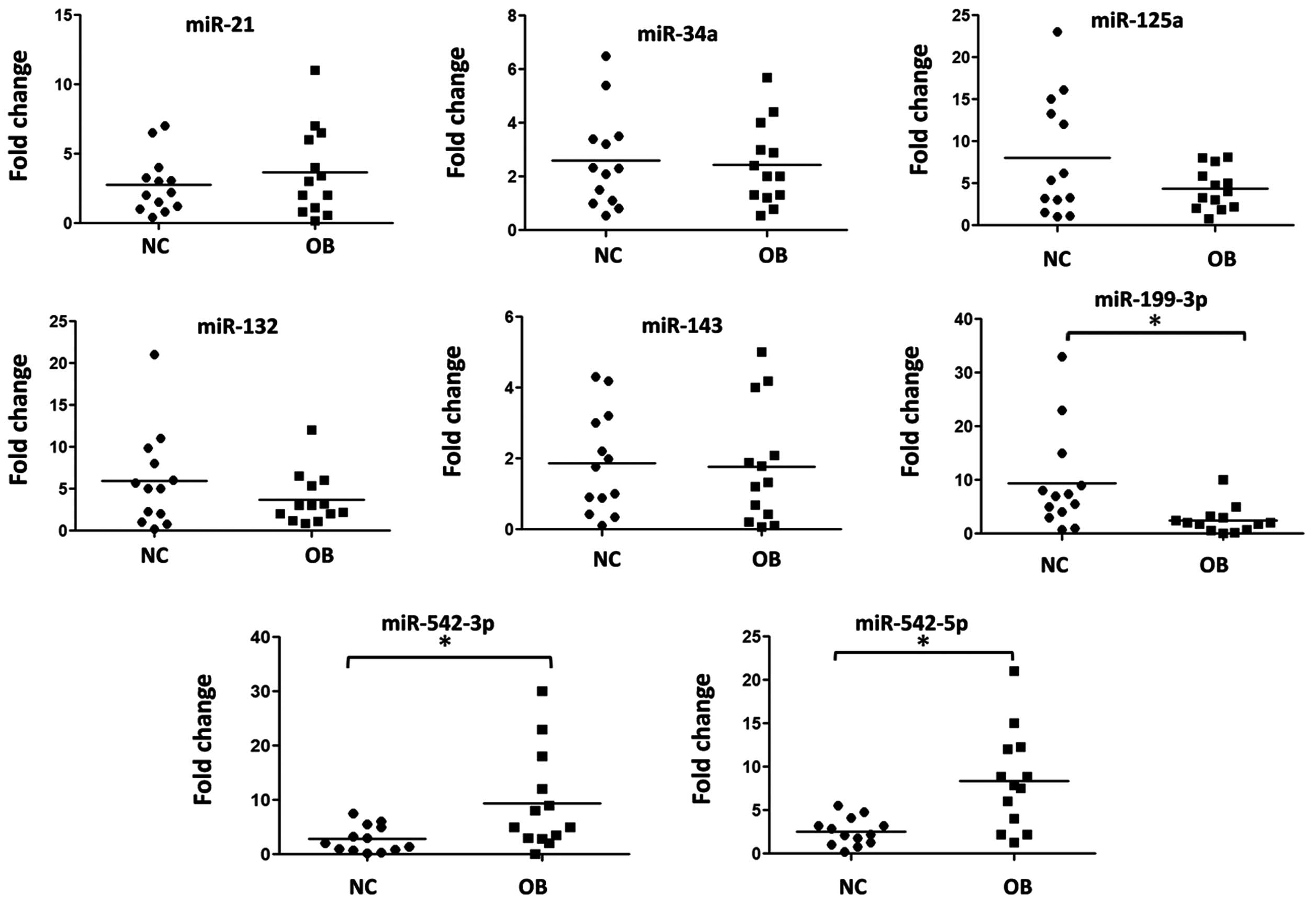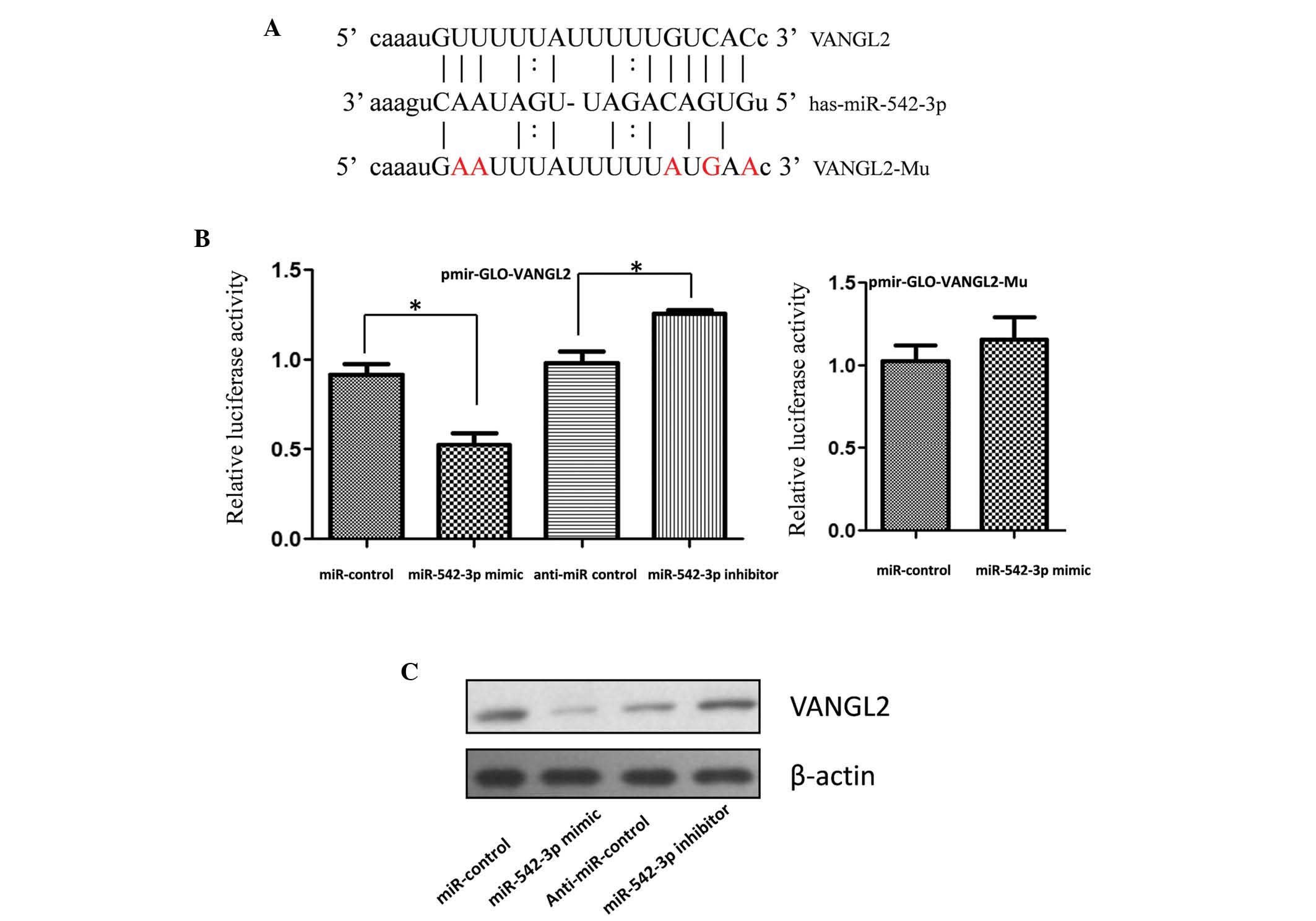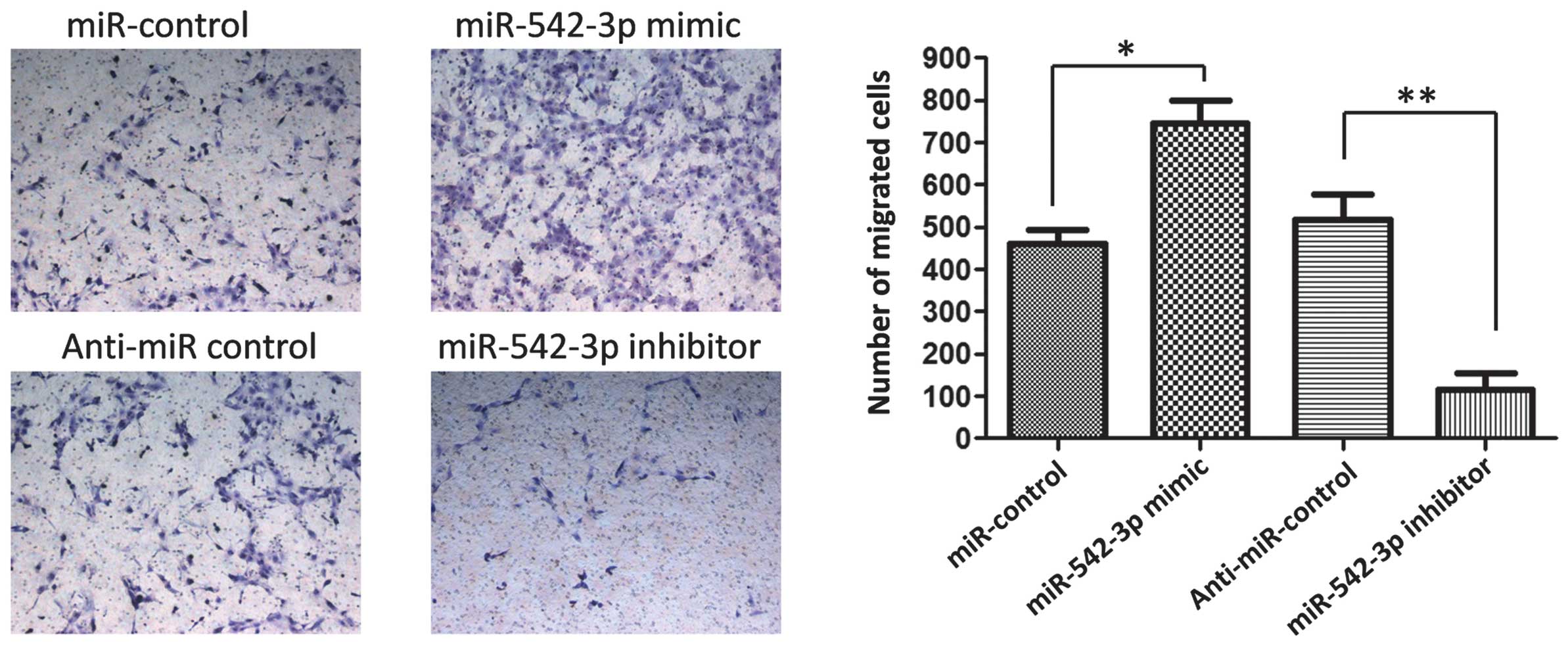miR‑542‑3p overexpression is associated with enhanced osteosarcoma cell proliferation and migration ability by targeting Van Gogh‑like 2
- Authors:
- Published online on: October 27, 2014 https://doi.org/10.3892/mmr.2014.2777
- Pages: 851-856
-
Copyright: © Li et al. This is an open access article distributed under the terms of Creative Commons Attribution License [CC BY_NC 3.0].
Metrics: Total
Views: 0 (Spandidos Publications: | PMC Statistics: )
Total PDF Downloads: 0 (Spandidos Publications: | PMC Statistics: )
Abstract
Osteosarcoma is the most common histological form of primary bone cancer, which arises from osteoid tissue. It occurs predominantly in infants and adolescents, with an incidence of 4‑5 cases/100,000,000. The 5-year survival rate of patients with osteosarcoma has significantly improved over time; however, there remains a significant proportion of patients that respond poorly to chemotherapy. An improved understanding of the pathology of osteosarcoma is required to provide more effective treatment strategies, identify biomarkers and develop novel chemotherapeutic agents. Disturbance in microRNA (miRNA) expression has been identified in osteosarcoma tissues and cell lines; however, the roles of miRNA during osteosarcoma pathogenesis remain to be elucidated. In the present study, the expression levels of eight selected miRNAs were investigated in osteosarcoma tissues and the results revealed that the expression levels of miR‑542‑3p and miR‑542‑5p were significantly upregulated and the expression of miR‑199‑3p was significantly downregulated. Using a dual luciferase assay and western blot analysis, the present study confirmed that Van Gogh‑like 2, which is a non‑canonical Wnt pathway suppressor, was a target gene of miR‑542‑3p. Subsequently, the biological function of miR‑542‑3p in U2OS cells was examined, which revealed that overexpression of miR‑542‑3p can enhance the cell proliferation and migration ability of U2OS cells. This indicated that miR‑542‑3p may act as an oncogene in osteosarcoma pathogenesis. The findings of the present study may provide assistance in understanding the development of osteosarcoma and aid in the development of strategies for the diagnosis and treatment of osteosarcoma.













